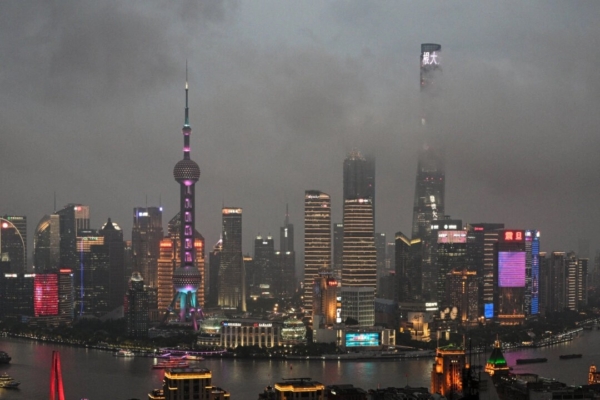Due to a slowdown in economic growth and declining profits, many multinational corporations have adjusted China’s position in their investment lists and started consolidating their businesses in China. This week, reports released by the European Union Chamber of Commerce in China and the American Chamber of Commerce in Shanghai highlighted the same investment trend.
On Thursday, a report released by the American Chamber of Commerce in Shanghai revealed that only 47% of American companies hold a positive outlook on the business prospects in China over the next five years, a 5-percentage-point drop from the previous year. This marks a historic low since the chamber began conducting this survey in 1999.
Allan Gabor, Chairman of the American Chamber of Commerce in Shanghai, attributed the decline in profitability of American companies in China to various factors.
Gabor stated, “This is an issue of domestic demand, as well as deflation. Of course, we cannot ignore our members’ views and concerns on geopolitical issues.”
He added, “How we formulate our business plans in China involves both investment and operational strategies in China.”
The report by the American Chamber of Commerce indicated that 40% of American companies in China are adjusting their investments, with a shift towards Southeast Asia and India being the primary focus.
According to data from the U.S. Department of Commerce, direct U.S. investment in China, in terms of cash flow, was $5.1 billion in 2023, a decrease of approximately 40% from the previous year. Over the past decade since 2014, the investment has decreased by about 50%.
On Wednesday, the European Union Chamber of Commerce released the latest edition of the “European Business in China Position Paper.” The report stated that many European companies believe that the risks of investment in China have exceeded the returns, and they find it difficult to trust the reform promises made by the Chinese authorities.
The report highlighted increasing doubts among European companies regarding whether the Chinese government has feasible plans to boost the economy. Despite Beijing’s stated intention to address challenges faced by foreign companies, most key measures in policy documents have made “limited progress or no progress at all.”
“There are signs that foreign enterprises have begun adjusting their expectations and market entry strategies in the Chinese market,” the report stated. “Investments by EU and U.S. companies in China have shrunk to about half of the levels seen a decade ago, while small multinational and small enterprises are more inclined to invest in other markets.”
The Chamber stated, “Given the advantages of stability, predictability of legal policies, and return on investment in other markets, maintaining the existing level of investment in the Chinese market is becoming increasingly difficult, and its viability is also being increasingly questioned.”
The survey by the European Chamber of Commerce indicated that the proportion of interviewed enterprises that listed China as their preferred investment destination, as well as those planning to expand their businesses in China in 2024, hit historic lows.
In the past, the size and economic growth of the Chinese market have been the main attractions for foreign companies. However, with the slowdown in economic growth, an aging population, the collapse of the real estate industry, intensified competition from local companies, and a highly politicized economic environment, the business environment in China has darkened significantly.
Foreign companies have been reducing or halting their investments in China, even withdrawing directly from the country, attracting global attention. Since the pandemic, Apple has diversified the production of some electronic products to countries like India and Vietnam.
Last month, Walmart announced its complete withdrawal from JD.com, selling its shares held for 8 years for $3.6 billion; IBM closed its research institution in China, affecting over a thousand job positions.
Japan’s largest steel company, Nippon Steel, announced its exit from China and is targeting markets in the U.S., India, and Southeast Asia.
International automakers are also downsizing their operations in China.
Last year, Mitsubishi Motors of Japan announced its exit from production in China. Honda recently suspended production at three factories in China and conducted layoffs through voluntary retirement. Compared to the same period last year, Honda’s sales in China from April to June decreased by 32% to 209,000 vehicles.
Hyundai Motor of Korea sold a factory in 2021 and closed another the following year. In January of this year, Hyundai Motor sold its Chongqing factory for about 1.62 billion Chinese yuan (approximately $290 million), less than half the price it was listed for when it was put up for sale in August of last year. At the same time, Hyundai Motor is expanding in India.
General Motors (GM) of the U.S. is also reducing investments, trimming R&D personnel in China, and possibly scaling back its production system.

